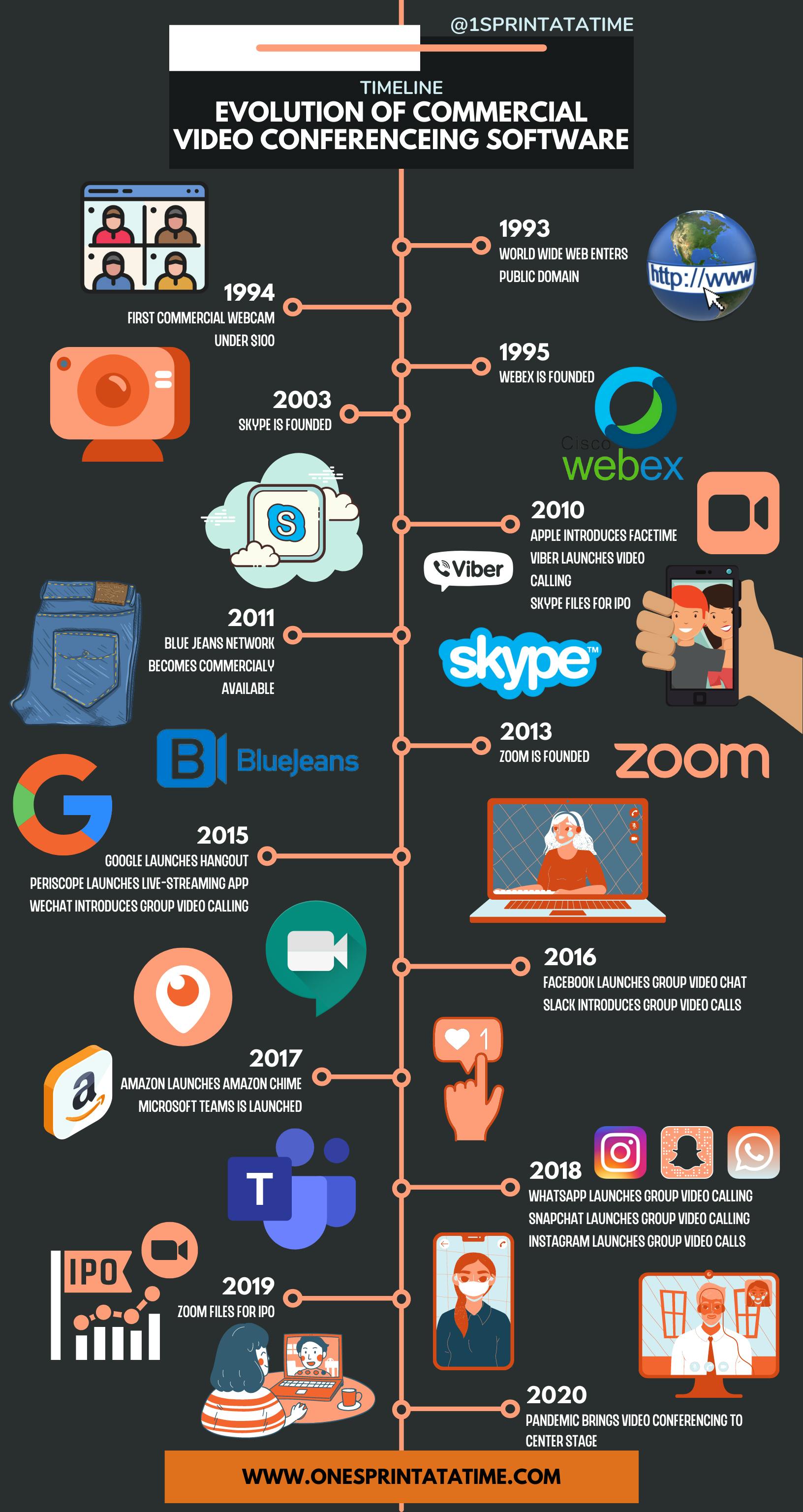Zooming in on the evolution of Video Calling
A look at how Video calling evolved to be a big part of our every day life and work.
Table of contents
 I worked at Cisco in 2011 and used Webex. Cisco was incredibly remote friendly and each meeting had a Webex attached. It had the auto-record feature that made sure all meetings got recorded and we had so many internal trainings on recording. One time I was watching some pre-recorded training and realized that the presenter had been a coworker in a previous role. "Small world!", I remember thinking.
I worked at Cisco in 2011 and used Webex. Cisco was incredibly remote friendly and each meeting had a Webex attached. It had the auto-record feature that made sure all meetings got recorded and we had so many internal trainings on recording. One time I was watching some pre-recorded training and realized that the presenter had been a coworker in a previous role. "Small world!", I remember thinking.
I worked at a few start-ups over the years and adding a zoom link was not really a thing. If you weren't in office, you were not in the meeting. Even when there was a link on the invite, people forgot to dial in until that one person who was working from home texted someone to remind them to dial in. If you were not in office, you were out of sight out of mind.
Pandemic is definitely changed all that. We are spending 40+ hours on Zoom and Zoom fatigue is an HR priority to address.
Having done interview on Skype in 2010 and having recorded Webex meetings in 2011, I have been very curious why Zoom is the frontrunner in the space. Why not Skype, Webex, Google Meet, or BlueJeans. I am familiar with the feature gaps of many of these products, but Zoom is at $36B market cap at the time of writing this article and that kind of market opportunity should be worth investing in, or so you would think.
Facebook prioritized building video calling on Messenger, Whatsapp and now also Instagram, optimizing for engagement and the internal metric of driving "meaningful conversations". Of these, Messenger's video calling is the most stable and was probably the first phone app to offer screen sharing features. I am my mom's IT helpdesk and the screen share feature on messenger was a lifesaver during pandemic as we're stuck oceans apart.
It looks like Microsoft is the only company that had a very cohesive strategy on adding a enterprise ready video conferencing offering. Enterprise customers already using Outlook and launching Microsoft Teams made sure the Microsoft office suite was complete. Although Google also targets enterprise market with their G-Suite products, they didn't seem to have prioritized improving Google Meet to the same degree and what we saw was people adding Zoom chrome extension to add Zoom meetings on their google calendar.
The market cap of Zoom is at $36 Billion as of writing this. Microsoft and Google with 2.1 Trillion and 1.6 Trillion respectively, seem to have prioritized their video conferencing offering even thought its only a 1-2% worth of an opportunity to them at their size. This offering only enhances their current offering and probably doesn't bring significant additional revenue.
Considering that, Cisco, having had Webex years ahead of any players in the market, didn't capitalize on the pandemic opportunity at all. If they had, $36 Billion is 15% of their market cap and I can't help but imagine that would have been a worthwhile growth story.

